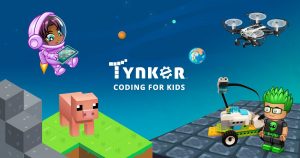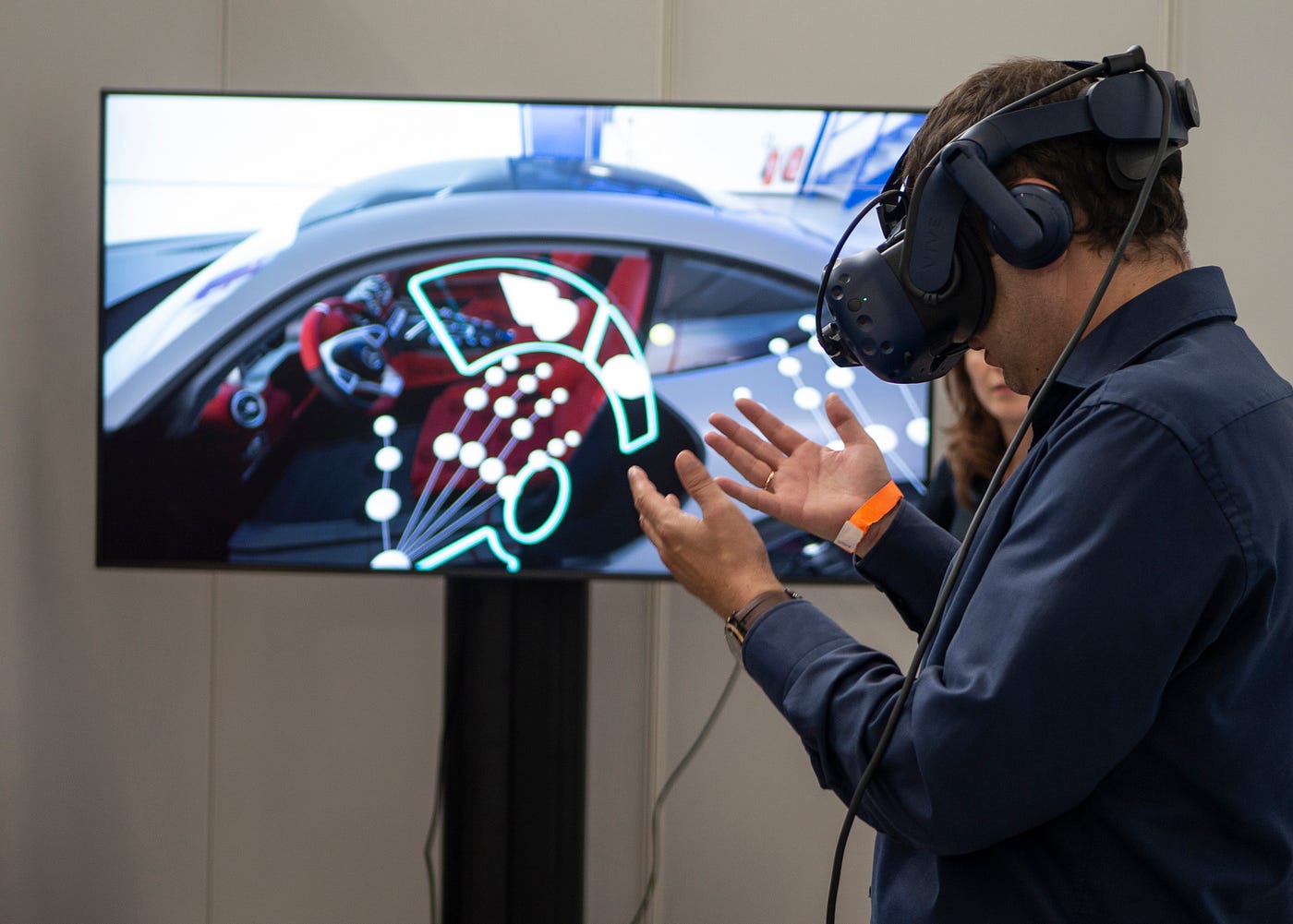Introduction
Machine learning has become a buzzword in the tech industry, revolutionizing various fields and applications. But what exactly is machine learning, and why should we introduce this complex concept to kids?
Machine learning is a branch of artificial intelligence that focuses on the development of algorithms and systems that can learn and improve from data without being explicitly programmed. It enables computers to analyze large sets of data, identify patterns, and make predictions or decisions based on the information it has learned.
Teaching machine learning to kids may seem daunting at first, given its sophisticated nature. However, by simplifying and presenting the concepts in a way that is relatable and engaging for children, it can open up a world of possibilities and ignite their curiosity.
So why should we teach machine learning to kids?
For starters, machine learning is one of the most rapidly advancing fields, with applications in various industries such as healthcare, finance, and transportation. By introducing kids to machine learning at an early age, we can prepare them for a future where technological advancements are intertwined with everyday life.
Furthermore, teaching machine learning encourages critical thinking, problem-solving skills, and creativity. It prompts children to analyze data, identify trends, and make predictions, fostering their analytical and logical reasoning abilities.
Moreover, machine learning introduces kids to the concept of automation and efficiency. They learn how machines can be programmed to perform tasks, leading them to explore the possibilities of automating mundane or repetitive activities.
Lastly, machine learning empowers kids to understand data-driven decision-making. In a world flooded with information, the ability to process and interpret data effectively is a highly valuable skill. Teaching kids machine learning equips them with the tools to make informed decisions based on data-driven insights.
Now that we understand the importance of teaching machine learning to kids, let’s explore some of the benefits this knowledge can bring to their lives and how we can introduce this concept to them in an engaging manner.
What is Machine Learning?
Machine learning is a branch of artificial intelligence that focuses on developing algorithms and systems capable of learning from data and making predictions or decisions without being explicitly programmed. It is based on the idea that machines can analyze vast amounts of data, identify patterns, and learn from them to improve their performance over time.
In traditional programming, humans write code to instruct machines on how to perform specific tasks. However, in machine learning, the approach is different. Instead of explicitly programming every instruction, machine learning algorithms are designed to learn from data and make decisions or predictions based on patterns and trends they identify.
There are several types of machine learning, including supervised learning, unsupervised learning, and reinforcement learning. In supervised learning, the algorithm is provided with a labeled dataset, where the desired outcome is already known. The algorithm learns to map inputs to outputs based on the provided examples.
Unsupervised learning, on the other hand, deals with unlabeled data. The algorithm is not provided with specific outcomes but instead works to identify patterns and relationships within the data. This type of learning is often used for tasks such as clustering and dimensionality reduction.
Reinforcement learning is a type of learning where an agent interacts with an environment and learns to maximize rewards or minimize penalties based on its actions. It is commonly used in robotics and game playing.
Machine learning algorithms can be applied to a wide range of domains, including image recognition, natural language processing, recommendation systems, and autonomous vehicles, to name a few. The success of machine learning lies in its ability to handle large amounts of data and derive insights that may not be apparent to humans.
While machine learning has its complexities, teaching the basics to kids can be a great way to introduce them to the world of data analysis, problem-solving, and decision-making. By starting with simple concepts and gradually building their knowledge, kids can develop a solid understanding of how machines can learn and adapt based on data.
In the following sections, we will explore why teaching machine learning to kids is beneficial and how we can approach this topic in a way that is engaging and enjoyable for them.
Why teach machine learning to kids?
The rapid advancement of technology has made machine learning an integral part of our lives. Teaching machine learning to kids at a young age can offer numerous benefits and prepare them for the future. Here are some compelling reasons why we should introduce machine learning to kids:
Promoting Future-Ready Skills: As technology continues to evolve, skills related to data analysis, problem-solving, and critical thinking are becoming crucial for success in various fields. By teaching machine learning to kids, we equip them with the necessary skills to navigate and excel in a data-driven world.
Fostering Curiosity and Innovation: Introducing kids to the concept of machine learning encourages their natural curiosity and stimulates their creativity. It sparks their interest in exploring patterns, analyzing data, and developing innovative solutions to real-world problems.
Enhancing Computational Thinking: Machine learning involves breaking down complex problems into smaller manageable tasks and developing algorithms to solve them. Teaching kids machine learning helps cultivate their computational thinking skills, enabling them to approach challenges with logical and systematic reasoning.
Encouraging Data Literacy: In today’s digital age, data is abundant. Teaching machine learning enables kids to understand and interpret data effectively. They learn how to analyze data, identify trends, and make informed decisions. This data literacy empowers them to navigate the data-driven landscapes of various disciplines.
Instilling Ethical and Responsible AI Use: Integrating ethics into machine learning education teaches kids about the importance of responsible AI usage. They learn to consider the ethical implications of AI applications and make conscious decisions about how to use machine learning in a manner that respects privacy, fairness, and inclusivity.
Preparing for a Technological Future: Machine learning is rapidly transforming various industries, from healthcare to finance. By introducing kids to machine learning at an early age, we equip them with valuable knowledge and skills that will be in high demand in the job market of the future.
Promoting Diversity and Inclusivity: Machine learning, when taught inclusively, can empower underrepresented groups and bridge gaps in access to technological opportunities. It provides a platform for diverse voices and perspectives to contribute to the development and application of machine learning solutions.
By teaching machine learning to kids, we not only prepare them for the future but also empower them to become creators and innovators in their own right. The next section explores the specific benefits of teaching machine learning to kids in more detail.
Benefits of teaching machine learning to kids
Teaching machine learning to kids offers a plethora of benefits that go beyond just understanding the algorithms. Here are some key advantages of introducing machine learning to children:
Enhanced Problem-Solving Skills: Machine learning encourages kids to approach problems analytically by breaking them down into smaller components and finding effective solutions. It helps develop their critical thinking abilities, enabling them to tackle complex problems in a systematic manner.
Cultivation of Computational Thinking: Machine learning involves developing algorithms and models to solve problems. Teaching kids machine learning nurtures their computational thinking skills, teaching them how to approach tasks with a logical and step-by-step mindset.
Promotion of Creativity and Innovation: Machine learning allows kids to explore their creativity by designing and implementing their own projects. They learn to think outside the box, experiment with new ideas, and find innovative solutions to problems.
Development of Data Literacy: Machine learning relies on data analysis and interpretation. Teaching kids machine learning introduces them to concepts such as collecting, organizing, and analyzing data, enabling them to become more data literate and make informed decisions based on evidence.
Improved Mathematical and Statistical Skills: Machine learning involves mathematical and statistical concepts like linear algebra, probability, and statistics. Teaching machine learning to kids helps reinforce these mathematical foundations, making complex concepts more tangible and applicable.
Enhanced Technology Literacy: As machine learning becomes increasingly prevalent in our society, teaching kids about this technology enhances their understanding of how it works. It prepares them to navigate and interact with cutting-edge technologies in their future personal and professional lives.
Encouragement of Collaboration and Teamwork: Machine learning often involves teamwork, as multiple individuals contribute their skills and expertise to solve problems. By engaging kids in machine learning projects, they learn to collaborate, communicate, and work effectively in a team setting.
Promotion of Reflective Thinking: The iterative nature of machine learning encourages kids to continuously evaluate and improve their models based on feedback and results. This fosters a growth mindset and a habit of thoughtful reflection, helping them develop a deeper understanding of their own thinking process.
Preparation for Future Career Opportunities: Machine learning is a rapidly growing field with numerous career opportunities. By exposing kids to machine learning concepts at a young age, they gain a head start in acquiring the skills and knowledge needed for future careers in artificial intelligence, data science, and related fields.
Empowerment to Make a Positive Impact: Teaching machine learning to kids imparts an understanding of how machines can be used to address real-world challenges. It empowers them to use their skills and knowledge to create solutions that can positively impact their communities and the world at large.
By teaching machine learning to kids, we not only equip them with valuable skills but also inspire a sense of curiosity, creativity, and innovation. The next section explores practical ways to introduce machine learning to kids through fun and engaging projects.
How to Teach Machine Learning to Kids
Teaching machine learning to kids may seem challenging, but with the right approach, it can be a fun and engaging experience. Here are some effective strategies to introduce machine learning to kids:
1. Start with the Basics: Begin by explaining the core concepts of data, patterns, and predictions. Use relatable examples to demonstrate how machines can learn from data and make decisions based on patterns they identify.
2. Make it Hands-On: Engage kids in interactive activities and projects that involve real data. For example, have them collect data about their favorite books, toys, or sports and use it to make predictions or recommendations.
3. Use Visuals and Gamification: Utilize visuals, diagrams, and interactive games to explain complex concepts. Visualizing data and algorithms can help kids understand how machine learning works in a more tangible and exciting way.
4. Incorporate Technology Tools: Introduce kid-friendly machine learning tools and platforms that allow them to experiment and create. Tools like Scratch, TensorFlow Playground, and Code.org provide visual and interactive interfaces for learning machine learning concepts.
5. Teach Data Collection and Analysis: Demonstrate how to collect and analyze data, emphasizing the importance of accurate data for making reliable predictions. Encourage kids to explore different sources of data and come up with creative ways to collect and represent it.
6. Break Down Complex Algorithms: Break down complex machine learning algorithms into simplified steps. Use analogies and storytelling to make it more relatable. For example, explain a decision tree algorithm using a game of 20 questions.
7. Encourage Experimentation: Foster a culture of experimentation by encouraging kids to try out different approaches and see how they impact the outcomes. Emphasize that making mistakes is part of the learning process and that they can learn from both successes and failures.
8. Integrate Cross-Disciplinary Activities: Connect machine learning concepts to other subjects such as math, science, and art. Explore how machine learning can be used to create music, analyze scientific data, or generate art.
9. Promote Collaboration and Group Projects: Encourage kids to work together in groups or teams to solve problems and create machine learning projects. Collaborative learning enhances communication skills and allows for brainstorming and sharing ideas.
10. Emphasize Ethics and Responsible AI Use: Discuss the ethical considerations and responsibilities associated with machine learning and artificial intelligence. Teach kids about fairness, bias, and privacy concerns, and empower them to use machine learning in a responsible and inclusive manner.
Remember, the key is to create a supportive and engaging environment where kids can explore, experiment, and learn at their own pace. By making machine learning accessible and enjoyable, you can spark their interest in this exciting field and inspire a lifelong passion for technology and innovation.
Fun Projects to Introduce Machine Learning to Kids
Introducing machine learning to kids through hands-on projects can make the learning experience both engaging and exciting. Here are some fun projects that can spark their interest and showcase the principles of machine learning:
1. Image Recognition Games: Create a game where kids train a model to recognize different objects or animals in images. They can collect and label their own image dataset and build a simple image recognition system using platforms like Teachable Machine or TensorFlow.
2. Music Recommendation System: Show kids how machine learning algorithms can be used to create personalized music recommendations. They can explore music datasets, analyze user preferences, and build a simple recommender system using platforms like Google’s Collaborative Filtering tool or Python libraries like pandas and scikit-learn.
3. Predictive Sports Analytics: Engage kids who are interested in sports by demonstrating how machine learning can be used for predicting game outcomes. They can collect and analyze historical game data, train a model, and make predictions. This project can be done using Python with libraries like pandas and scikit-learn.
4. Chatbot Creations: Guide kids in building their own chatbot using natural language processing techniques. They can train a chatbot to answer questions on a specific topic or engage in interactive conversations. Platforms like Dialogflow or Chatfuel can be used to create and deploy chatbots.
5. Sentiment Analysis of Movie Reviews: Introduce kids to the concept of sentiment analysis by analyzing movie reviews. They can explore sentiment analysis libraries and classify reviews as positive or negative based on the sentiment expressed. Python libraries like NLTK or libraries specifically designed for sentiment analysis, such as TextBlob, can be used for this project.
6. Handwriting Recognition: Teach kids how machines can interpret handwritten characters by building a simple handwriting recognition system. They can collect their own handwritten samples, preprocess the data, and train a model using tools like TensorFlow or scikit-learn.
7. Weather Prediction Model: Help kids build a weather prediction model using historical weather data. They can analyze meteorological data, identify patterns, and train a model to predict future weather conditions. Python libraries like NumPy and scikit-learn can be used for this project.
8. Traffic Sign Recognition: Show kids how machine learning algorithms can be used for traffic sign recognition. They can collect images of traffic signs, label them, and build a model to classify different signs using platforms like TensorFlow or Keras.
9. Plant Disease Detection: Introduce kids to the field of agriculture and plant science by teaching them how to build a plant disease detection system. They can learn to identify common plant diseases by analyzing leaf images and train a model using platforms like TensorFlow or PyTorch.
10. Facial Expression Recognition: Help kids explore the world of emotion detection by building a facial expression recognition system. They can collect images of different facial expressions, label them, and train a model to recognize emotions using libraries like OpenCV and Keras.
These projects not only introduce the core concepts of machine learning to kids but also allow them to explore different domains and experience the practical applications of this technology. By making machine learning interactive and enjoyable, kids can develop a deeper understanding and appreciation for the possibilities it offers.
Resources for Teaching Machine Learning to Kids
Teaching machine learning to kids can be made easier and more effective with the help of various resources and tools specially designed for young learners. Here are some valuable resources to assist in teaching machine learning to kids:
1. Machine Learning for Kids: Machine Learning for Kids is an online platform that provides kid-friendly tools and activities to introduce machine learning concepts. It offers tutorials, coding projects, and interactive exercises that enable kids to learn and experiment with machine learning in a fun and accessible way.
2. Scratch: Scratch is a visual programming language created by MIT that allows kids to create interactive stories, games, and animations. It also offers extensions like ScratchML, which enables them to integrate machine learning algorithms into their projects and explore the principles of AI.
3. Code.org: Code.org is a nonprofit organization that provides free coding lessons and resources for kids of all ages. Their AI-related courses, such as “AI for Oceans” and “AI for Good,” introduce basic concepts of machine learning and allow kids to engage in hands-on activities and projects.
4. TensorFlow Playground: TensorFlow Playground is an interactive web-based tool that helps kids explore the basics of neural networks and machine learning. With its easy-to-use interface, kids can adjust network parameters, observe real-time visualizations, and see the impact on predictions.
5. Google AI Experiments: Google AI Experiments is a collection of interactive projects that showcase various applications of AI and machine learning. Kids can explore projects like “Teachable Machine” and “AI Duet,” which allow them to experience the capabilities of machine learning in a creative and engaging way.
6. Kaggle Datasets for Education: Kaggle is a platform that hosts various datasets, competitions, and tutorials related to data science and machine learning. Their “Datasets for Education” section provides curated datasets suitable for teaching machine learning, allowing kids to work with real-world data and gain practical experience.
7. AI4K12.org: AI4K12.org is an initiative that offers resources, lesson plans, and activities specifically designed to teach AI and machine learning concepts to kids. They provide curriculum guidelines, assessments, and professional development materials to support educators in integrating AI education into their classrooms.
8. YouTube Channels: Various YouTube channels create educational content on machine learning for kids. Channels like “Machine Learning for Kids” and “AI Explorations with James Bond” provide video tutorials, explanations, and demonstrations to help kids understand and engage with machine learning concepts.
9. Books and Online Courses: Several books and online courses are dedicated to teaching machine learning to kids. Help Your Kids with Computer Coding” by DK Publishing and “Machine Learning for Kids” by Dale Lane are excellent resources that provide step-by-step explanations and projects designed for young learners. Platforms like Udemy and Coursera also offer online courses tailored for kids interested in exploring machine learning.
10. Local AI Workshops and Coding Clubs: Look for local workshops, coding clubs, or technology organizations that offer hands-on machine learning activities for kids. These workshops often provide in-person or virtual learning experiences that engage kids in collaborative projects and allow them to connect with peers who share similar interests.
These resources provide a solid foundation for teaching machine learning to kids and enable them to explore the exciting world of AI. Whether through online platforms, books, or local workshops, these resources cater to different learning styles and help make machine learning accessible and enjoyable for young learners.
Conclusion
Teaching machine learning to kids opens up a world of possibilities and prepares them for the future. By introducing them to concepts like data analysis, problem-solving, and artificial intelligence, we empower them to navigate and excel in a technology-driven world. Through engaging projects and interactive resources, kids can develop critical thinking skills, computational thinking abilities, and a deeper understanding of data-driven decision-making.
Machine learning promotes curiosity, creativity, and innovation, allowing kids to explore their interests and make a positive impact in various fields. By teaching them the ethical considerations associated with AI, we instill responsible and inclusive AI use, ensuring that they approach machine learning with integrity and respect for others.
With the help of resources like Machine Learning for Kids, Scratch, and Google AI Experiments, teaching machine learning becomes accessible and enjoyable for kids. These tools provide interactive platforms, tutorials, and projects that foster hands-on learning and encourage collaboration among young learners.
Overall, teaching machine learning to kids prepares them for the technological advancements and opportunities that lie ahead. It equips them with essential skills and knowledge, allows them to think critically and creatively, and empowers them to solve complex problems.
As educators, parents, and mentors, it is our responsibility to guide and inspire the next generation. By introducing them to the world of machine learning and artificial intelligence, we help nurture their potential, ignite their passion for technology, and lay the foundation for a brighter future.

























